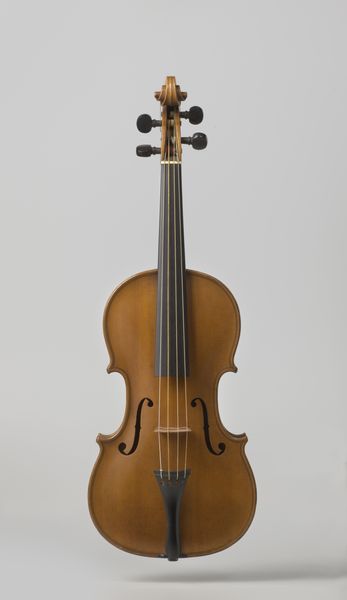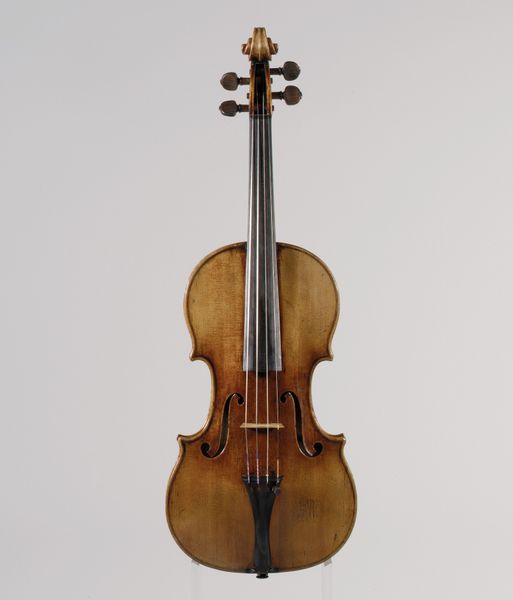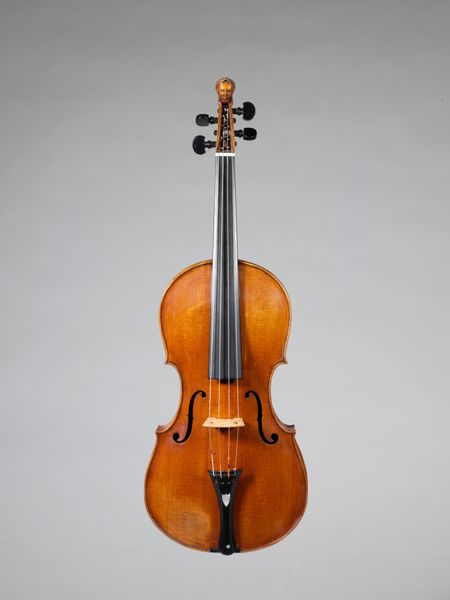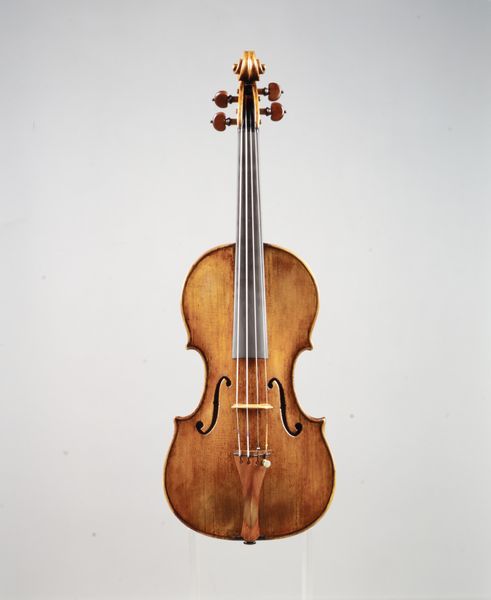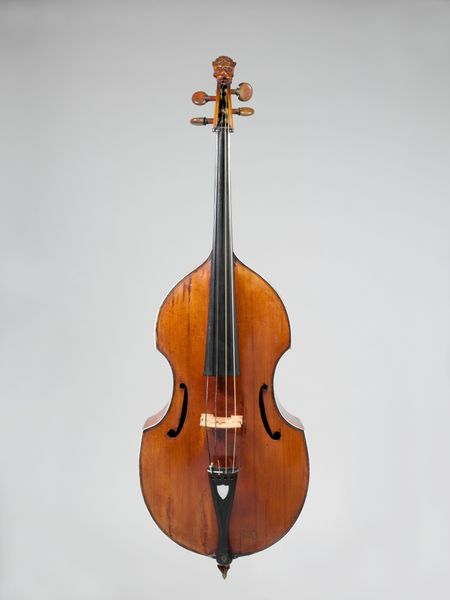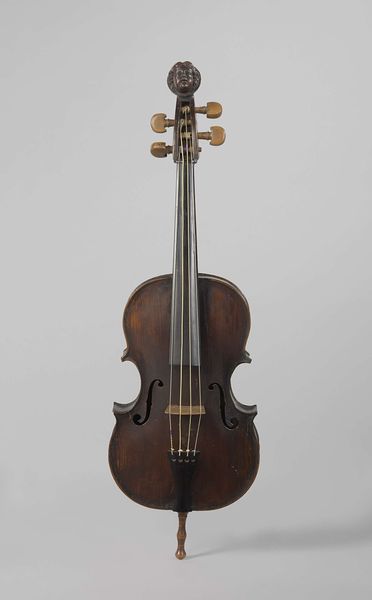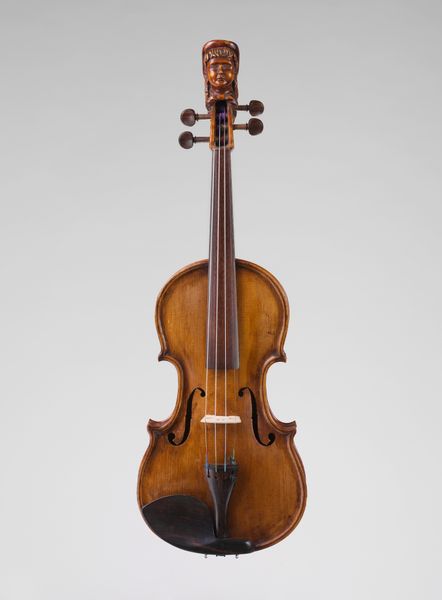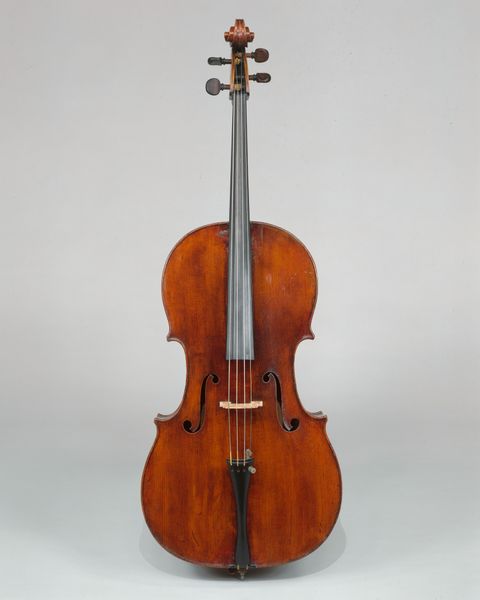
Dimensions: L. 61.8 cm (24 5/16 in.), Diam. (including bridge) 10.7 cm (4 3/16 in.)
Copyright: Public Domain
Editor: This is the Pardessus de Viole, crafted in 1770 by Louis Guersan. Made of wood, it is currently housed at the Metropolitan Museum of Art. The delicate carving at the top and warm color of the wood give it such a gentle, human presence. What's your interpretation of this instrument, as more than just an object of musical expression? Curator: I see this instrument as a complex artifact embedded in the social and cultural context of its time. We should think about it beyond its immediate beauty. Can you consider who might have played this? Editor: A woman, perhaps? Its small size seems tailored for someone of smaller stature. Curator: Precisely. The Pardessus de Viole was especially popular among women in the French aristocracy. Knowing this, doesn't the instrument evoke questions of class, gender, and power? Think of the musical education afforded to aristocratic women, offering them a voice, albeit within certain limitations. The instrument becomes a symbol, simultaneously reflecting privilege and constraints placed upon women of that era. Editor: It’s amazing to think this beautiful object also tells a story about the people and power structures of the time. So much more than just music. Curator: Indeed. Objects like these offer unique perspectives into historical narratives, enabling us to understand broader intersectional stories that are waiting to be heard.
Comments
No comments
Be the first to comment and join the conversation on the ultimate creative platform.
